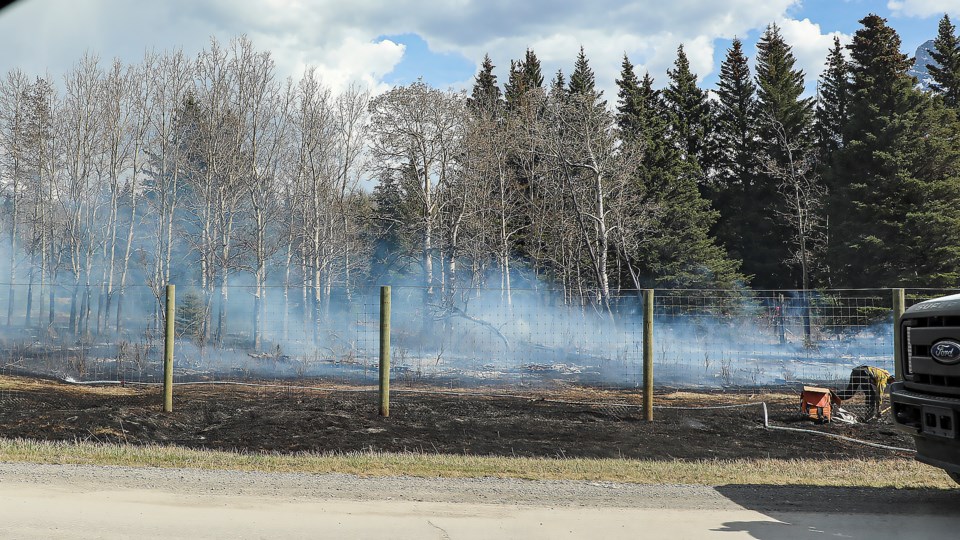Dire predictions that Western Canadian provinces would endure a repeat of last year’s monstrous blazes that forced widespread evacuations and scorched huge swaths of land have yet to materialize. But it would be premature to breathe easy, warn wildfire officials in Alberta and British Columbia, who say lightning storms and expected sizzling temperatures will increase the risk as summer progresses.
“Thanks to the weather, we’re really in a much better place this season compared to where we were at the same time last year,” Alberta Wildfire spokesperson Josée St-Onge said. Roughly 31,000 hectares have burned so far this season, compared to a staggering 1.8 million hectares at the same point in 2023, she added.
“While there’s still a lot of summer left and the potential for more wildfires is there, we do feel better prepared because our resources can focus on the areas of high fire danger as opposed to being stretched thin.”
Last year was a record-breaking fire season for both provinces. In Alberta, more than 2.2 million hectares burned from nearly 1,100 fires, while B.C. had nearly 2,300 fires that seared more than 2.8 million hectares.
Tens of thousands of residents in both provinces were forced to evacuate their homes while firefighters were flown in from other provinces and abroad to help battle the blazes, which produced acrid smoke that suffocated skies across Canada and the northern United States. A year later, people whose homes and businesses were destroyed by flames continue to rebuild.
Experts warned, at the start of this year, that Western Canada could face another intense fire season, fuelled by drought conditions and limited precipitation. But, call it luck or natural weather variations, rain washed over both provinces in the critical months of May and June.
Still, there have been significant fires and evacuations ordered this season, in places such as Fort McMurray, Alta., and Fort Nelson, B.C., but not to the extent of 2023. There were 89 fires burning in B.C. on Friday, 12 of which were considered out of control, and 18 were active in Alberta, with just one out of control.
Ms. St-Onge said most of Alberta’s firefighters are on standby in areas of the province that are at higher risk, particularly up north, and are focused on training and equipment preparation. The less-intense season also allowed for more prevention and mitigation work in the spring, including controlled burns.
Sarah Budd, an information officer with the BC Wildfire Service, said there were 36 prescribed burns that occurred in the spring in partnership with First Nations, local governments and others, which can help reduce the intensity of wildfires.
She said the province employs roughly 1,300 wildland firefighters, dozens of whom are currently on loan to the Yukon where fires are burning on both sides of the North Klondike Highway, a major transportation route that connects Alaska through B.C. to the territory.
Alberta, which employs roughly 850 wildland firefighters, had also lent staff to other regions. Ms. St-Onge said firefighters helping the Northwest Territories returned on Wednesday and the service recently sent air tankers to Alaska and the Northwest Territories.
Both provincial fire services say they are prepared, however, to respond quickly should the situation change.
Ms. Budd said it would only take a handful of continuously warm and dry days to ignite fires, especially in parts of the province that have underlying drought conditions, notably northeastern B.C. She said increased lightning activity into the summer months could also make the province more susceptible to wildfires.
“I certainly wish I had a crystal ball for what it is going to look like,” she said.
Jed Kaplan, a professor at the University of Calgary in the department of earth, energy and environment, said this fire season, so far, falls into the “historically normal” category following the anomaly of 2023. But, he added, another highly destructive and devastating season could take place again.
“If we’re talking about the next 100 years, it’s possible. If we’re talking the next few years, I’m not placing any bets,” he said. “What we can say is the likelihood of years or seasons like we experienced in 2023 occurring again is increasing with every year of greenhouse gas emissions and warmer temperatures.”
He said warmer conditions driven by climate change are a major concern for Western Canada. Snowpacks, for example, disappear more quickly with less snowfall, revealing extremely flammable dead and dry vegetation.
The terrain, forest density, forest management practices and global weather patterns, such as El Niño, are also contributing factors to wildfire risk, said Prof. Kaplan.
“Even if we make it through this summer without smoky skies and without huge wildfires everywhere, we are going to have to be vigilant and have these discussions about how to better manage our forests to be resilient to wildfire and also address the sort of elephant in the room, which is climate change.”




